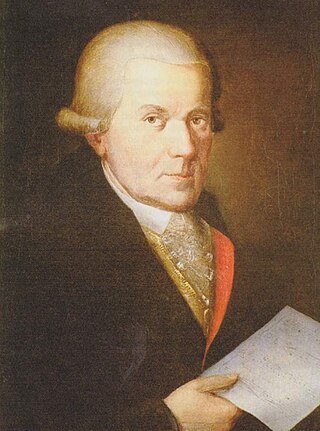
Johann Michael Haydn was an Austrian composer of the Classical period, the younger brother of Joseph Haydn.
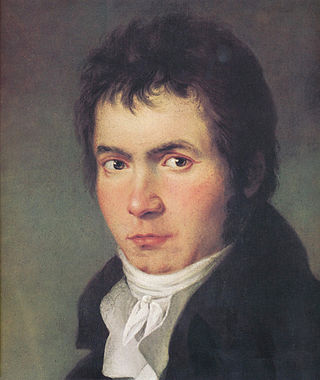
Ludwig van Beethoven composed the Mass in C major, Op. 86, to a commission from Prince Nikolaus Esterházy II in 1807. The mass, scored for four vocal soloists, choir and orchestra, was premiered that year by the Prince's musical forces in Eisenstadt. Beethoven performed parts of it in his 1808 concert featuring the premieres of four major works including his Fifth Symphony. The mass was published in 1812 by Breitkopf & Härtel.
The Deutsche Singmesse is a form of (Tridentine) Low Mass that developed in German-speaking countries.

"Nun bitten wir den Heiligen Geist" is a German Christian hymn. The first stanza is a leise from the 13th century which alludes to the Latin sequence Veni Sancte Spiritus for Pentecost. It was widely known, and aside from its Pentecostal origin was also used as a procession song and in sacred plays.

"Herr Christ, der einig Gotts Sohn" is a Lutheran hymn by Elisabeth Cruciger. Printed in 1524 in the Erfurt Enchiridion, together with 18 hymns by Martin Luther, it is one of the oldest Lutheran hymns. The text combines Lutheran teaching with medieval mysticism. It has been the basis of musical settings such as Bach's chorale cantata Herr Christ, der einge Gottessohn, BWV 96.
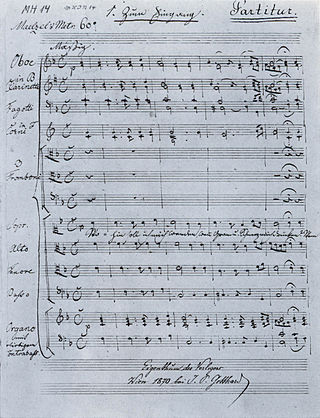
The Deutsche Messe, D 872, is a hymn-cycle by Franz Schubert written in 1827. Neither a Mass nor strictly speaking German, it was published in Vienna as what it is: Gesänge zur Feier des heiligen Opfers der Messe. It sets a sequence of eight non-liturgical German poems by Johann Philipp Neumann, who commissioned Schubert's music, one or more of which could be used separately during Mass. A ninth hymn, given as an appendix, treats the Lord's Prayer, bringing the length to about 35 minutes when the music is performed, as it often now is, as one big concert work.

Praxis pietatis melica is a Protestant hymnal first published in the 17th century by Johann Crüger. The hymnal, which appeared under this title from 1647 to 1737 in 45 editions, has been described as "the most successful and widely-known Lutheran hymnal of the 17th century". Crüger composed melodies to texts that were published in the hymnal and are still sung today, including "Jesu, meine Freude", "Herzliebster Jesu", and "Nun danket alle Gott". Between 1647 and 1661, Crüger first printed 90 songs by his friend Paul Gerhardt, including "O Haupt voll Blut und Wunden".

The Missa tempore Quadragesimae, Klafsky 1:19, MH 553, is a mass without a Gloria by Michael Haydn. The work in D minor was written in 1794 in Salzburg, scored for a four-part choir and organ. It is suitable also for Advent.
"Jesus Christus, unser Heiland, der von uns den Gotteszorn wandt" is a Lutheran hymn in ten stanzas by Martin Luther for communion, first published in 1524 in the Erfurt Enchiridion. It is one of Luther's hymns which he wrote to strengthen his concepts of reformation. The models for the text and the melody of Luther's hymn existed in early 15th-century Bohemia. The text of the earlier hymn, "Jesus Christus nostra salus", goes back to the late 14th century. That hymn was embedded in a Hussite tradition.

"Gott sei gelobet und gebenedeiet" is a Lutheran hymn of 1524 with words written by Martin Luther who used an older first stanza and melody. It is a song of thanks after communion. Luther's version in three stanzas was printed in the Erfurt Enchiridion of 1524 and in Johann Walter's choral hymnal Eyn geystlich Gesangk Buchleyn the same year. Today, the song appears in German hymnals, including both the Protestant Evangelisches Gesangbuch, and in a different version in the Catholic Gotteslob.
"Herzlich tut mich verlangen" is a German hymn, with lyrics written in 1599 by Christoph Knoll, with a melody adapted from a secular song by Hans Leo Hassler. It is a prayer for a blessed death, beginning "Herzlich tut mich verlangen nach einem sel'gen End". Its hymn tune, Zahn No. 5385a, was later also used for Paul Gerhardt's "Befiehl du deine Wege" and "O Haupt voll Blut und Wunden".
"Straf mich nicht in deinem Zorn" is a Lutheran hymn with a text written by Johann Georg Albinus as a paraphrase of Psalm 6. It was first printed with a formerly secular melody in Dresden in 1694. The song was included in 31 hymnals. The melody inspired musical settings both for organ and vocal works. The hymn was translated by Catherine Winkworth as "Not in anger, Mighty God", which appeared in 13 hymnals.

"Macht hoch die Tür" is a German popular Advent hymn, written in Ducal Prussia in the 17th century. The lyrics were written by Georg Weissel in 1623, for the inauguration of the Altroßgärter Kirche in Königsberg. The melody that is now associated with the text appeared first in 1704 in the hymnal by Johann Anastasius Freylinghausen.
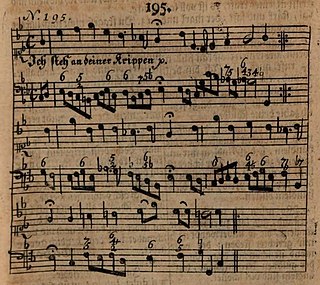
"Ich steh an deiner Krippen hier" is a German Christmas hymn, with lyrics by Paul Gerhardt which were first published in 1653. It was then sung with an older melody by Martin Luther, but a melody which was likely created by Johann Sebastian Bach for Schemellis Gesangbuch of 1736 is now part of current Protestant and Catholic hymnals.

"Das Grab ist leer, der Held erwacht" is a Catholic hymn for Easter, first printed in 1777 in the hymnal Landshuter Gesangbuch published by Franz Seraph von Kohlbrenner. Keeping only the first of five stanzas, with additional two stanzas, it appeared in hymnals of the 19th century, and later in different versions in several regional sections of the Catholic hymnal Gotteslob. It is a frequently sung hymn in Easter services.

Johann Franz Seraph von Kohlbrenner was a German polymath, promoting the Enlightenment in Bavaria. While working as a civil servant for the Bavarian court, he published a hymnal which contained a complete German High Mass and songs such as "Das Grab ist leer, der Held erwacht" for which he is known. These hymns and especially his German mass, used in settings by Michael Haydn, remain popular to this day.
"Wir weihn der Erde Gaben" is a Christian offertory hymn with text by Petronia Steiner to the melody of the 1529 "Lob Gott getrost mit Singen". It appeared in the first edition of the Catholic hymnal Gotteslob and is part of its second edition. Several composers wrote settings for use in church.
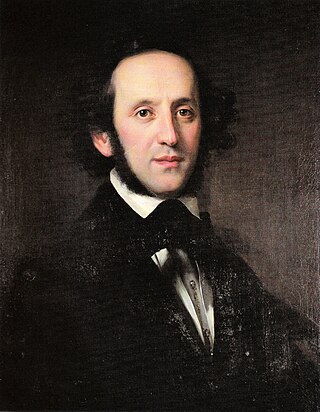
Die Deutsche Liturgie, MWV B 57, is a collection of musical settings of the ten sung elements in the Protestant liturgy, composed by Felix Mendelssohn for double choir a cappella. He wrote it in 1846 for the Berlin Cathedral, on a request by the emperor, Friedrich Wilhelm IV of Prussia. It was published by Breitkopf & Härtel in 1875 in the complete edition of the composer's works.













